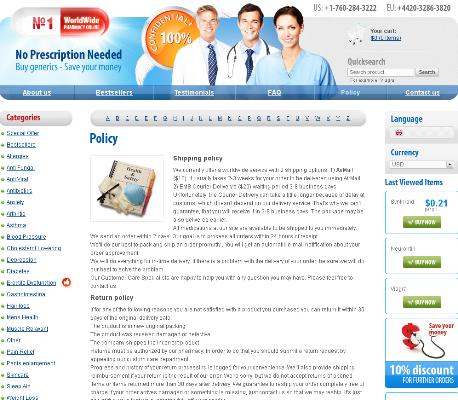| Royal City Drugs |
To Visit Online Pharmacy Click HERE ↓
Prelone Dosage Guide: How Much Is Safe?
Understanding Prelone: What It Is and Why Prescribed
Prelone, also known by its generic name prednisolone, is a powerful corticosteroid medication commonly used to reduce inflammation in the body. Doctors often turn to Prelone when managing conditions such as asthma, allergic reactions, arthritis, and certain autoimmune disorders. Its ability to control immune responses makes it essential for those experiencing severe flare-ups or needing rapid symptom relief.
This medication comes in several forms, including liquid and tablets, making it suitable for both adults and children. Depending on the specific health issue, Prelone may be prescribed for short-term relief or for longer courses. Physicians carefully evaluate each patient’s symptoms, medical history, and response to treatment before recommending Prelone.
Here’s a quick look at common uses for Prelone:
| Condition | Why Prelone is Used |
|---|---|
| Asthma | Reduce airway inflammation and ease breathing |
| Allergic Reactions | Control severe allergic symptoms fast |
| Autoimmune Diseases | Suppress immune system overactivity |
Factors Influencing Your Safe Prelone Dosage

When your doctor prescribes prelone, they consider a unique mix of factors to ensure its safety and effectiveness for you. Age plays a central role, as children and seniors often need lower doses than healthy adults. Your medical history is equally important—conditions like liver or kidney disease, diabetes, or infections can prompt special adjustments. Even the reason you’re using prelone, such as allergies, autoimmune illness, or asthma, can influence the ideal dosage and duration.
Other medications also matter. If you’re taking drugs that interact with steroids, your doctor will need to account for possible increased or decreased effects. Lifestyle, weight, and recent illnesses can further shift what’s considered a safe amount. It’s always best to share all relevant details with your provider to tailor prelone dosing specifically for you.
Typical Dosage Ranges for Adults and Children
When it comes to finding the right balance with prelone, each patient’s unique needs play a major role. For adults, doctors commonly prescribe doses that can range from 5 to 60 mg per day, depending on the condition and its severity. These can be taken as a single daily dose or split throughout the day, always based on your doctor’s guidance.
Children require especially careful attention, as dosage is usually calculated by weight. The standard pediatric starting point is often around 0.14 to 2 mg per kilogram per day, and the dose is finely tuned to suit ongoing needs. Adjustments are not unusual given how rapidly children can change.
Always remember, your healthcare provider tailors prelone dosing to you or your child’s specific situation, ensuring both effectiveness and safety.
Recognizing Signs of Too Much or Too Little

Taking too much Prelone can lead to symptoms like facial swelling, rapid weight gain, muscle weakness, or mood changes such as irritability or confusion. On the other hand, too little may make your underlying condition worse, with signs like increased joint pain, fatigue, or swelling returning.
It’s important to stay alert for these signals in everyday life—if you notice sudden changes in your health or behavior, contact your healthcare provider promptly to discuss possible updates to your medication plan.
Adjusting Dosage: When and How to Do It
Sometimes, despite following the initial prescription, your response to Prelone may differ from what's expected. This is when your doctor may consider a dosage adjustment. Factors like worsening symptoms, unexpected side effects, or life changes—such as stress or infection—can prompt a reevaluation of your treatment plan.
Dosage changes should always be guided by your healthcare provider. Stopping Prelone suddenly or changing the amount on your own can disrupt your body’s hormone balance. Your doctor might recommend a gradual increase or decrease in dosage to minimize risks.
Regular check-ins make dose adjustments safer and more effective. Your provider may use blood tests, symptom tracking, and feedback to decide if changes are necessary.
| Adjustment Reason | Action |
|---|---|
| Side Effects | Consult doctor, possible dose reduction |
| Poor Symptom Control | Follow up for possible increase |
| Life Changes/Illness | Temporary dose adjustment may be needed |
Key Tips for Safe and Effective Prelone Use
Imagine starting each day, pill bottle in hand, wondering if you’re doing everything possible to keep your treatment effective. Consistently taking Prelone exactly as prescribed is a powerful first step. Always measure liquid doses carefully and try to take your medicine at the same time each day.
Keep an open line of communication with your healthcare provider, reporting any side effects or unusual symptoms right away. Lastly, avoid abruptly stopping Prelone unless your doctor advises, as this can cause serious health issues.






Email Us
Fill out all the fields below and press submit, a rep will contact you as soon as possible.

